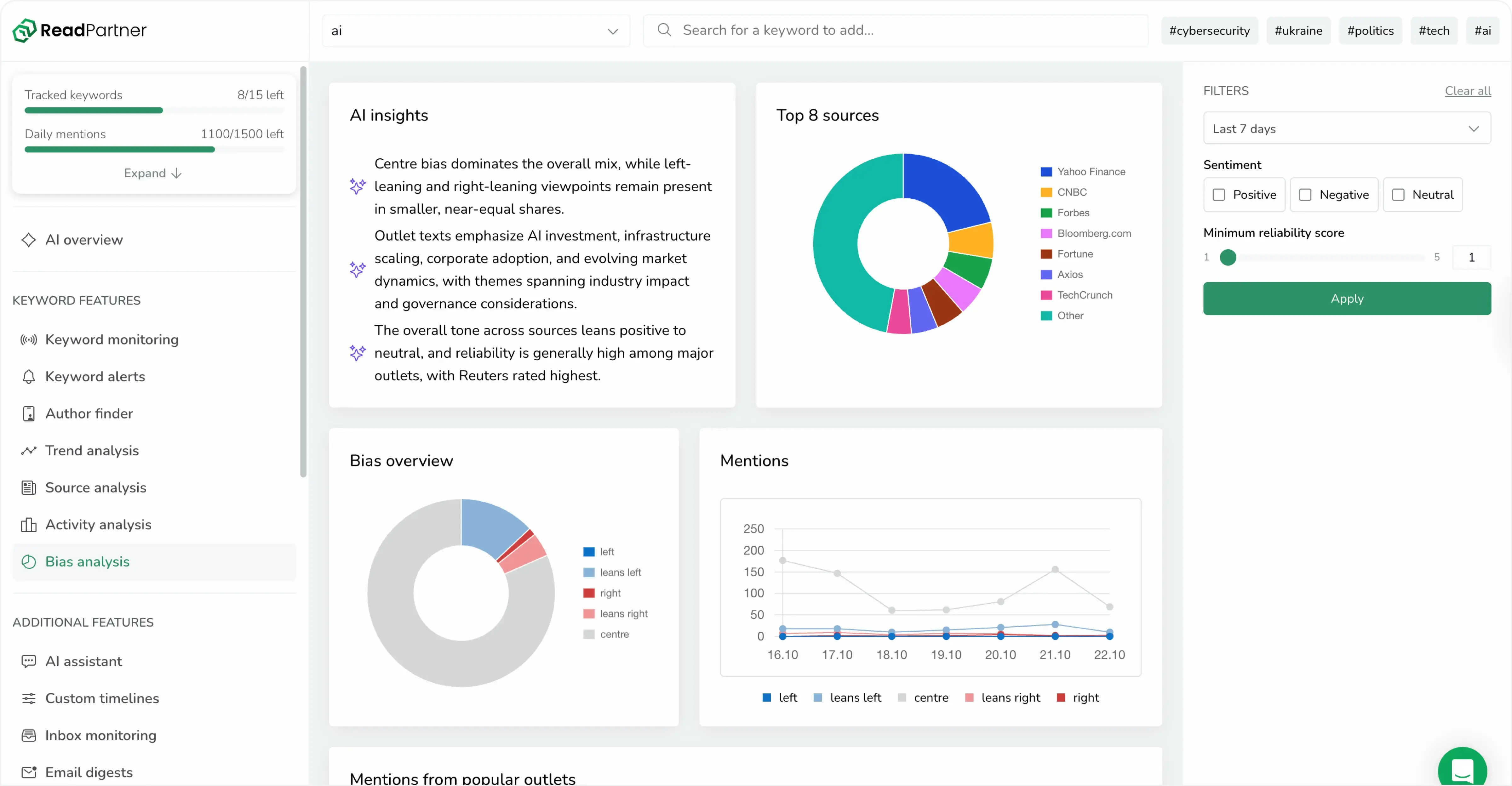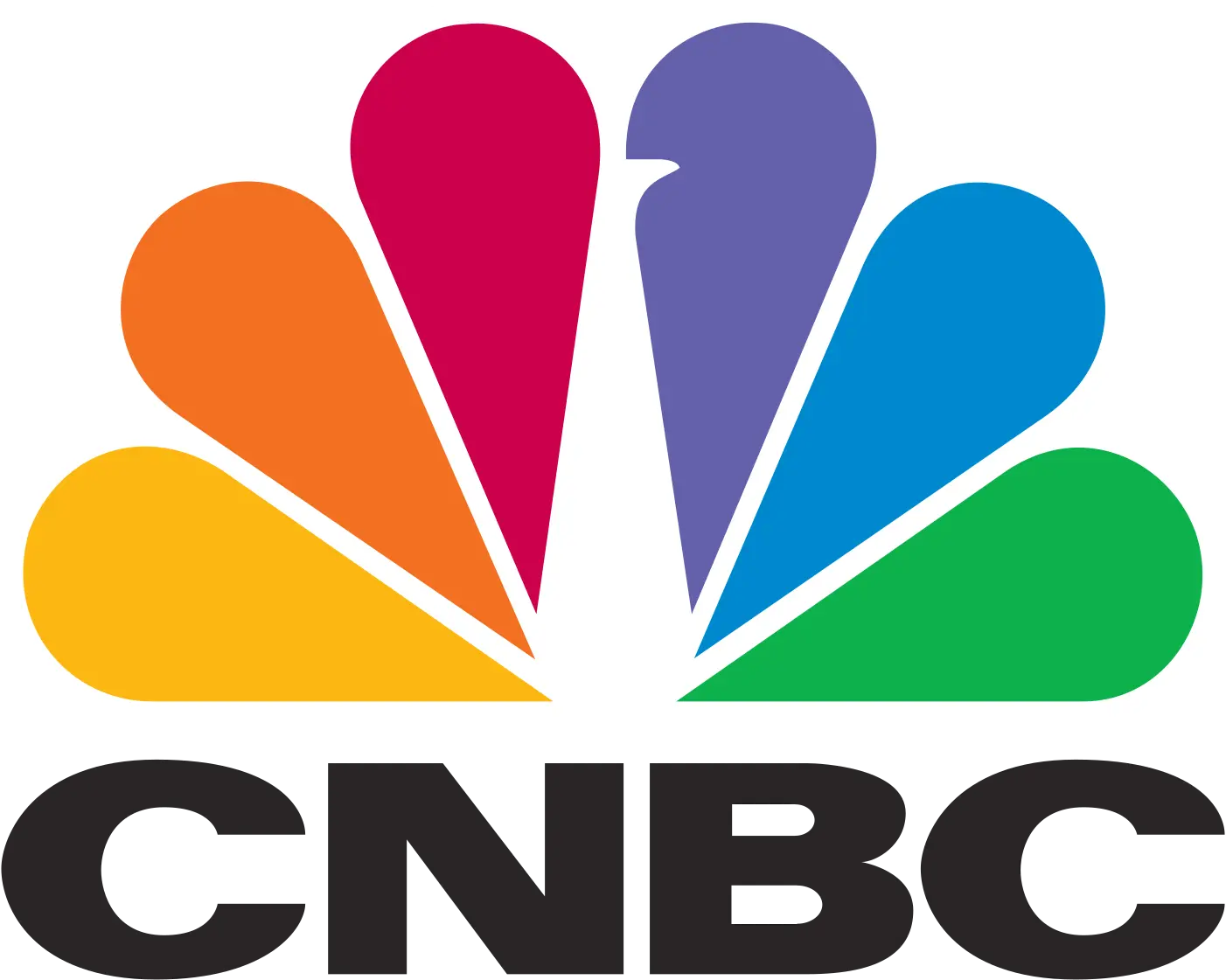Media Intelligence Glossary

A
Affiliate marketing is the practice of outsourcing marketing activities to individuals who promote your products or services in exchange for a commission on each targeted action completed by a customer they refer. Typically, affiliate marketing involves reaching out to an influencer or blogger, providing them with a unique tracking link to identify which customers came through them, and agreeing on the commission structure.
An attribution model is a model that assigns credit for conversions to marketing touch points. It allows businesses to understand what marketing channels drive sales the most and optimize their advertising and budget allocation based on this data. Attribution models range from very simple ones, where businesses simply record the last touch point before target action such as purchase, to complex ones, where businesses track the entire customer journey, analyzing weights of each touch point and whether they contribute to awareness, interest, or intent.
Audience segmentation refers to dividing your broader audience into smaller groups with common traits, such as age, country, values and behaviors. This allows businesses to tailor their marketing and messaging to a higher degree for each group, increasing the effectiveness of their promotional efforts.
Bounce rate refers to the percentage of people who leave your website after only viewing the page they landed on, not exploring any further, and not performing any actions. High bounce rate warrants investigation into why users leave the page right away: it can be caused by your website loading slowly, entry links being misleading, poor web design, or lack of clear next steps.
Brand awareness is how familiar and recognizable your brand is, meaning whether people know your brand exists, can remember your name and logo, and can associate them with your products. Brand awareness can be measured indirectly, using proxy metrics such as search volume or social media reach. Measuring brand awareness more directly requires conducting polls and surveys.
Brand equity is the value of the brand that does not derive from its physical assets or characteristics. Brand equity, essentially, represents the influence the brand has among consumers, and it is based on brand awareness, perceived quality, customer experience, and loyalty. High brand equity allows businesses to charge a premium for the perceived value of the brand itself, rather than the goods and services they provide.
Brand safety is a set of practices aimed at ensuring that your brand’s reputation remains protected from the damaging effects of your online advertising appearing next to inappropriate or polarizing content, such as obscenity, hate speech, and piracy.
A buyer persona is a composite representation of your ideal customer, built from real data about your existing audience. The purpose of a buyer persona is to create a realistic profile that reflects this data, then infer additional insights the data alone doesn’t reveal, such as pain points, motivations, and goals. Essentially, developing a buyer persona is an exercise in empathy aimed to estimate personal qualities of your customers that data does not reveal. This allows businesses to tailor their products and marketing to a higher degree.
Click-through rate is a digital marketing metric that shows the percentage of people who click on your link, ad, or other call to action when presented to them. CTR is calculated by dividing the number of clicks by the number of impressions, or views. High CTR represents effective ads or content that engage and resonate with people, while low CTR means that your audiences do not find the piece you present interesting enough to interact with it.
Press clipping is the collection of publications relating to a single person, organization, or topic from various sources such as online news, newspapers, broadcast, and radio. Press clipping is used by PR professionals to collect information on how a topic or an entity is covered and perceived by the public.
Content marketing is the practice of promoting your brand’s products or services indirectly. It involves creating and sharing engaging content such as videos, posts, or blogs that provide value as informational or entertaining pieces. Sharing such content builds trust and stimulates interest in your company among your targeted audiences. Content marketing can serve to increase brand awareness and loyalty, creating willingness to purchase from you in the future.
A coverage report is a summary document that provides an overview of the media coverage received within a specific timeframe. It typically includes metrics such as reach, engagement, and sentiment analysis of news articles. In Public Relations, it is used to analyze the impact of PR campaigns.
Crisis monitoring is the process of continuously scanning media publications in order to detect articles and posts that signal potential threats to a company’s reputation, operations, or finances. It allows organizations to identify risks early and manage them effectively before they escalate into large problems.
Data-driven marketing is a marketing strategy that involves basing marketing campaigns on customer data and analytics instead of trying to guess what would resonate with your audience. Data-driven marketing uses hard evidence as a basis for decisions, and it has shown its effectiveness at delivering results and minimizing guesswork, thus reducing the risks businesses have to take when choosing how to market their products.
Demand generation is a marketing strategy that focuses on generating awareness and interest in a company’s products or services to ensure long-term demand. Demand generation focuses on the topmost part of the marketing funnel: it educates potential customers who may not know they have a problem your product can solve. To achieve this, companies employ various marketing channels such as content, social media, and events.
Digital PR is a strategy that takes traditional public relations tactics and applies them to the online digital environment. It involves using digital channels such as websites, social media, and online news outlets to get coverage, engage audiences, and build backlinks. Digital PR includes most of the traditional PR activities, such as content creation, outreach, journalist networking, and online reputation management, but performs them within the digital sphere.
Disinformation detection is the process of identifying false information that is spread intentionally to deceive people and secure economic or political gain. It can employ various methods and tools such as fact-checking, linguistic analysis, network analysis, or AI models to identify patterns of manipulation and flag appropriate content as potentially deceitful.
Display advertising is online visual advertising. All ads that are based on a visual component and published online are called display ads. This includes pop-up ads on websites, banner ads on mobile apps, video ads on streaming services, and image ads on social media. Display ads are designed to capture a user’s attention and typically link to a landing page.
Earned media is media publicity that was not gained through purchasing ads or content, but instead, one that third parties provide of their own volition because they find the topic interesting or popular, not because they were paid to do so. Earned media is considered to be highly credible because it comes from independent sources. Media can be earned through strong public relations, customer experience and interest, and virally engaging content.
Email marketing refers to using email to promote products or services and build relationships with your audience. Email marketing typically includes informing customers about new products or deals, encouraging repeat business, direct communication, and guiding customers through the sales funnel.
Engagement farming is the practice of trying to maximize interactions on social media through manipulative tactics, often at the expense of content quality or reporting accuracy. Engagement farming includes provocative, controversial, or clickbait headlines and unsubstantiated sensational claims to trigger audiences to interact with the content. Engagement farming can also use bots to interact with the content en masse thus exploiting recommendation algorithms to push the piece of content.
Engagement rate is a metric that shows what share of the audience interacts with a piece of content, and it is used to judge how engaging a piece of content is. It is calculated based on the number of views or the number of followers, depending on what the situation requires. The formula is: number of interactions divided by the number of views/followers.
In media intelligence, fact-checking refers to the practice of vetting the information gathered through traditional or social media monitoring before acting on it. Acting on misinformed media posts without verifying their accuracy can bring serious reputational and even legal risks for businesses.
First-party data refers to the information businesses collect from their customers directly without employing a third party. First-party data typically includes details such as purchase history, website behavior, account information, and customer feedback. This data is valuable to businesses because they can be sure it is accurate and reliable, and it allows them to understand customer preferences, leading to more personalized marketing and products better suited to their customers’ needs.
Forecasting is the analysis of past and present data and patterns using statistical models to predict future events with varying degrees of certainty. Businesses use forecasting across different areas, such as marketing, budgeting, sales, and customer demand, to inform strategic decisions and allow them to plan ahead, reducing the inherent uncertainty of future changes.
Generative AI is a subset of artificial intelligence systems that are designed to generate new content. AI in general can perform various tasks, such as classification and detection, predictive analysis, computer vision, and running robotic systems. Generative AI specifically refers to AI models that create text, images, videos, or code.
Inbound marketing is a strategy that attracts customers by creating content of high value. Instead of pushing ads and messaging onto customers, inbound marketing provides solutions or interest value through blogs, articles, or social media content so that customers seek out the company themselves. By fostering trust and building relationships this way, the company can then convert the audience into loyal customers.
In media monitoring, insights are pieces of information that warrant action, such as revealing opportunities or identifying issues. For example, the number of mentions per week is not an insight, while learning that negative mentions covering product delays have increased is an insight, because it can inform action. If the delays are yours, it signals a problem; if they are your competitors’, it is a marketing opportunity.
In media monitoring, issue tracking means following a specific problematic topic to see how it develops over time. It involves monitoring mentions and sentiment changes around the issue in order to understand how it evolves and decide when and how to respond.
Journalist outreach is the process of contacting journalists and authors to build relationships and secure media coverage for your organization. This is done by pitching stories that are relevant to the individual journalists, and remaining in contact with them to provide expert commentary, useful data, or early access for reporting needs.
KPI is a quantifiable measure of progress toward a business goal. Creating a KPI involves setting a goal, for example, “increase website sales”, then identifying which available metrics can best reflect the progress toward that goal, for example, "monthly visitors” and “conversion rate”, and setting a quantitative target for those metrics, for example, “increase monthly visitors by 30% and conversion rate by 1%”. In essence, KPI is simply a metric with a target that is used as a measure of progress towards your goal.
Key message development is the process of creating clear, concise, and compelling statements that carry an organization’s or a product’s core purpose and value. These key messages then act as the foundation of all communications, ensuring that the core ideas the company conveys are consistent across advertisement, interviews, press releases, and social media posts.
Keyword strategy is part of search engine optimization of a company’s website. It includes researching what words and phrases people use when searching online, and deciding which ones are the most effective to use across the website and its content to attract the most relevant organic traffic.
A knowledge graph is a structured network of information that consists of entities, such as people, companies, products, or concepts, connected with relationship indicators that show how these entities are related. For example, “iPhone” and “iOS” would be connected with “runs on”, and “Apple Inc.” and “iPhone” would be connected with “makes”. Knowledge graphs are used by both humans and AI systems to understand connections and context, and extract insights from complex data.
Landing page optimization is the process of improving landing page elements in an effort to encourage visitors to take the action you want. Common elements include text tone and style, page layout, visual elements, calls to action, as well as back-end optimizations, such as increasing loading speed. Landing page optimization typically utilizes user data and analytics to guide these changes, as well as A/B and other types of testing to verify optimization effectiveness.
Large language models are a type of artificial intelligence that can understand and generate human-like text. They process vast amounts of data to learn language patterns, rules, and context. When trained, LLMs can perform various natural language processing tasks such as summarizing, writing, translating, and answering questions.
Lead generation is the process of attracting interest from potential customers (leads) and collecting their contact information in order to be able to follow up and guide them towards a purchase in the future. There are many different lead generation strategies, but in essence, they all boil down to using value or interest to encourage people to share their contact details. Examples include content marketing, SEO, advertising, referral programs, and webinars.
Lifetime value is a metric that predicts the total revenue a customer is expected to generate for a business over the entire length of their relationship. Average LTV can be calculated using this formula:
Average LTV = average purchase value * average purchase frequency * average customer lifespan
More advanced versions of LTV, such as per customer LTV or per group LTV, require advanced statistical modeling based on purchase history to make accurate predictions.
Machine learning is a branch of artificial intelligence that involves writing code that allows a system to recognize patterns in data and then use those patterns to solve problems, instead of explicitly programming step-by-step instructions on how to solve problems. Machine learning is widely used to create AI for different applications, such as recommendation algorithms, self-driving vehicles, and AI assistants.
Market segmentation means dividing your broad customer base into smaller groups that share similar characteristics, needs, or behaviors. This strategy allows you to target these groups more effectively by tailoring your products and marketing to their needs and interests. Typical segmentation criteria include using demographic, geographic, and behavioral characteristics to identify key customer segments.
Marketing automation is an umbrella term that refers to using software to automate repetitive marketing tasks to streamline, manage, and measure marketing tasks and workflows, such as email campaigns, social media posts, and lead nurturing.
A marketing funnel is a model that represents the stages a potential customer goes through on their journey from first awareness to making a purchase and becoming loyal. Marketing funnels typically include three key stages: awareness, when customers first learn of a brand; consideration, when they explore their options and consider alternatives; and conversion, when they decide to purchase your product. These stages are also commonly referred to as the top, middle, and bottom of the funnel.
Media coverage refers to the attention an event, person, company, or topic receives across media platforms, including news articles, broadcasts, and online content. Broad media coverage can create an increase in public awareness and credibility, as well as shape how the topic of coverage is perceived.
Media landscape refers to the overall environment of media outlets and channels. It is shaped by the current narratives and sentiment in the media, the structure and the makeup of outlets and channels, and the authors, journalists, and influencers who drive the conversations.
A media list is a database that contains information about media outlets, journalists, and influencers relevant to a specific industry or a topic. Media lists typically include contact information, areas of coverage, and audience information. Organizations can leverage this data to pitch stories, find partnerships, or build relationships with authors relevant to their industry.
Media monitoring is the process of collecting relevant news publications and analyzing them. Media monitoring can serve different purposes: it can be used to track competitor actions, regulatory changes, identify potential PR threats and opportunities, or consumer demand changes.
Misinformation detection is the process of identifying false, misleading, or inaccurate information in media content. Typically, the goal is to help organizations recognize misleading narratives so they are able to respond before misinformation spreads widely and causes reputational harm.
Native advertising is advertising that does not interrupt user experience, unlike more traditional advertising, such as banner ads on websites. Native advertising is designed to match the look, feel, and function of the platform and content where it appears. Native advertising can blend in seamlessly and increase the chances of users consuming the ad rather than quickly identifying that it is advertising and disregarding or skipping it.
Natural language processing is a branch of artificial intelligence that allows computers to understand, interpret, and generate human language. All AI systems that deal with human language, for example, sentiment analysis tools, translators, text-to-speech apps, or large language models, use NLP techniques to process language and generate responses.
Net promoter score is a metric derived from a survey that asks the question “How likely are you to recommend a company, product, or service on a 0-10 scale?”. The answers are categorized into promoters (9-10), passives (7-8), and detractors (0-6), and NPS is calculated using this formula:
NPS = (percentage of promoters) - (percentage of detractors)
NPS is commonly used to estimate the overall satisfaction of your audience as well as growth potential through word of mouth.
Omnichannel marketing is a strategy that unifies all customer touch points, such as websites, apps, social media, and physical stores, into one consistent brand experience that offers a frictionless transition between channels. Omnichannel marketing aims to improve customer conversions and loyalty by ensuring that messaging and offers are consistent across channels, and if a customer starts interacting with a company through one channel but wishes to transition to a different one, they can do so effortlessly.
Organic reach is the number of people who see your content naturally, without paid promotion or advertising. Organic reach is driven by recommendation algorithms that typically rely on factors such as user engagement, view time, or search relevance. This provides businesses with the option to develop engaging content that will spread naturally and attract leads instead of paying per view.
Owned media is any media channel or content that a brand fully controls. This includes company websites, blogs, social media profiles, and email lists. Companies use owned media to engage their audiences directly without relying on third-party platforms or advertising costs.
PESO is an abbreviation for Paid, Earned, Shared, Owned. The PESO model is a framework in PR and marketing that aims to create cohesive campaigns that cover all four types of channels. This helps organizations to unify their messaging and benefit from different channels amplifying each other, increasing the overall reach and effectiveness of campaigns.
Paid media is any media channel or content where a company pays to place its promotional content. Examples of paid media include display ads, social media ads, search engine ads, influencer integrations, and partnerships.
Programmatic advertising is the automatic buying and selling of ads in real time. When a user visits a website, ad sellers use software to collect that user’s data and send it over to a bidding auction. Ad buyers use software that identifies the most valuable customers and bids for them automatically within the bidding parameters they specify. This bidding process happens in milliseconds while the page is loading for the user, and the auction winner’s ad is displayed to the user instantly once the page loads.
Public Relations is the practice of managing a business’s communications and reputation with the public and the media to build trust and maintain a positive image. The work of PR primarily consists of writing press releases, pitching stories to media outlets, managing outbound communications, and handling crisis messaging.
Rage baiting means creating content that is designed to provoke anger, prompting audiences to leave negative commentary and share it. The influx of public anger drives high engagement, which signals recommendation algorithms to promote the content further, as they typically ignore sentiment. This practice creates short-term attention gains, but causes audiences to ignore the creator in the long term.
Reach is the size of the audience that content or a publisher reaches. Reach is widely used in different contexts, such as news outlet reach, meaning how many people read this news outlet, advertisement reach, meaning how many people saw the ad, or post reach, meaning how many people saw the social media post.
Referral marketing is the practice of incentivising people to recommend your products by offering them discounts or monetary rewards if the recommendation leads to a sale. Referral marketing can range from offering discounts to existing customers if they bring a friend, to contracting influencers to promote your products, paying them for every successful conversion.
Reputation management is the process of monitoring, influencing, and maintaining how the public perceives a company or an individual. Reputation management focuses on shaping a positive image through managing feedback, addressing negativity, and sharing stories and content that promote trust.
Retargeting is a digital advertising strategy that involves showing personalized ads to people who have previously interacted with your company but did not convert, for example, they visited your website, added something to the cart, but did not click buy. Retargeting aims to bring people back to complete the target action, such as making a purchase.
Search Engine Optimization is the practice of improving your website to increase its visibility on search engines, resulting in more organic traffic to your website from people who search for products or services you offer. SEO involves technical website adjustments to make it easier for crawlers to find, content creation to make the website valuable to users, and authority building through backlinks and other signals that show search engines your website is trustworthy and relevant.
Sentiment analysis in media monitoring refers to the automated identification of the tone and attitude expressed in news articles and social media posts. It is used to determine whether mentions of companies and products are positive, neutral, or negative at large scales, eliminating the need to scan every mention manually to understand if it’s praise or criticism.
Share of Voice or SoV is a popular general metric that represents how much media attention a company is getting compared to its competitors. It is calculated simply by dividing your brand mentions by mentions of all brands in your industry to get the percentage.
Social media listening is the process of monitoring online conversations on social media about a brand, industry, and products in order to understand customer sentiment, identify popular topics or features, and uncover opportunities by analyzing customer needs and pain points.
Traffic sources are the different channels from which visitors arrive at your website, such as search engines, advertisements, social media, or email campaigns. Analyzing traffic sources helps businesses understand which marketing efforts are most effective and optimize focus and budgeting accordingly.
Unique visitors are the individual people who visit your website during a specific time period, counted only once, regardless of how many times they return or how many pages they view. Unique visitors allow businesses to understand how many actual people visit their website, as opposed to views or visits, which count repeat visits from the same users.
User Experience is the overall impression a person has when interacting with a product, system, or service. It encompasses everything from functionality and ease of use to emotional response and satisfaction. Optimizing UX, even in small details such as the feel of peeling protective film from packaging or the color of a “Buy” button, has been shown to drive customer loyalty and business results.
User retention is a metric that shows a product’s ability to keep users engaged and returning over time. User retention is calculated as the percentage of active users who continue using the product after a specific period of time. This metric is most used with digital products, such as websites, apps, and online content.
User-Generated Content is any content, such as text, images, or videos, that is created and shared by users or customers, not the brand itself. UGC can include unboxing videos, product reviews, social media posts, or fan art. UGC is very valuable for marketing purposes, as it boosts engagement, promotes trust towards the brand, and creates positive word of mouth.
A value proposition is an innovation, service, or feature that makes a product uniquely attractive to customers. A well-defined value proposition helps customers quickly understand the benefits of choosing your product, which, in turn, drives sales.
Video marketing is using video content to promote a product, service, or brand, engaging audiences through well-made videos that bring value to them. Video marketing can be effective at building awareness, generating leads, and driving sales, depending on the type of content you make and where you present it.
Viewability is a metric that measures if an ad is actually seen by the user, not simply put on a page for them to never notice it. For example, the industry standard for display ads is that at least 50% of the ad is visible on the screen for 1 consecutive second. If an ad loads but it is below the screen, or the user scrolls past it too quickly, it counts as not viewable. Using this metric helps businesses to understand if their ad spend reaches users' eyes or the ads are only technically displayed on the website but stay invisible to the user.
Viral marketing is a strategy that involves creating content on social media that is highly shareable, encouraging people to spread it. Businesses use viral marketing to reach large audiences with their message quickly.
Web analytics refers to collecting, measuring, and analyzing data about website usage to understand user behavior and improve outcomes. In business, web analytics typically includes tracking metrics such as the number of monthly visitors, traffic sources, and engagement to understand how the website can be improved to provide a better user experience or drive sales.
Website traffic is the number of users visiting your website over a specific period of time. Website traffic is measured in visits, or sessions, and it is a measure of the site’s popularity and reach. Businesses work to increase their website traffic in order to increase the number of leads they can pursue to generate sales.
Year-over-Year is a method of comparing metrics, such as revenue, traffic, or conversion rates, between two exact same periods of time over this and last year, for example last quarter of this year to last quarter of last year. YoY allows businesses to assess their long-term performance while eliminating seasonal variations.
Yield rate is the percentage of potential customers or leads who complete a desired action, for example, making a purchase or creating an account. Yield rate is used by businesses to estimate how effective their investments are and how much return they are generating.
Zero-party data is information that a customer directly shares with a company intentionally and proactively. Examples of zero-party data include customers answering questionnaires, personal data customers provide to join a loyalty program, indicating what they want to buy, or selecting preferred communication channels.
Let's build your solution together






